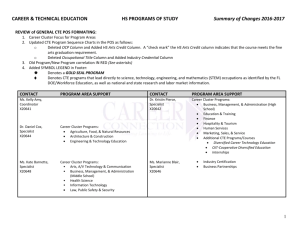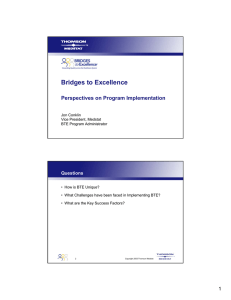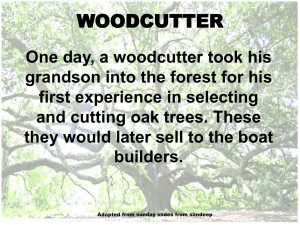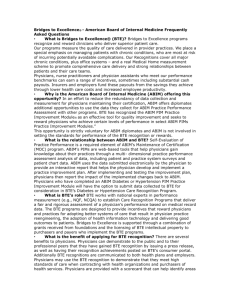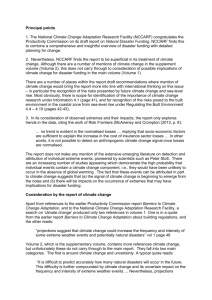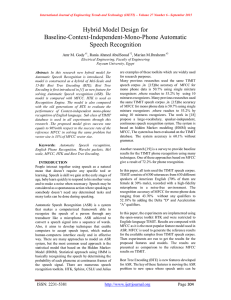Submission DR225 - John Handmer
advertisement
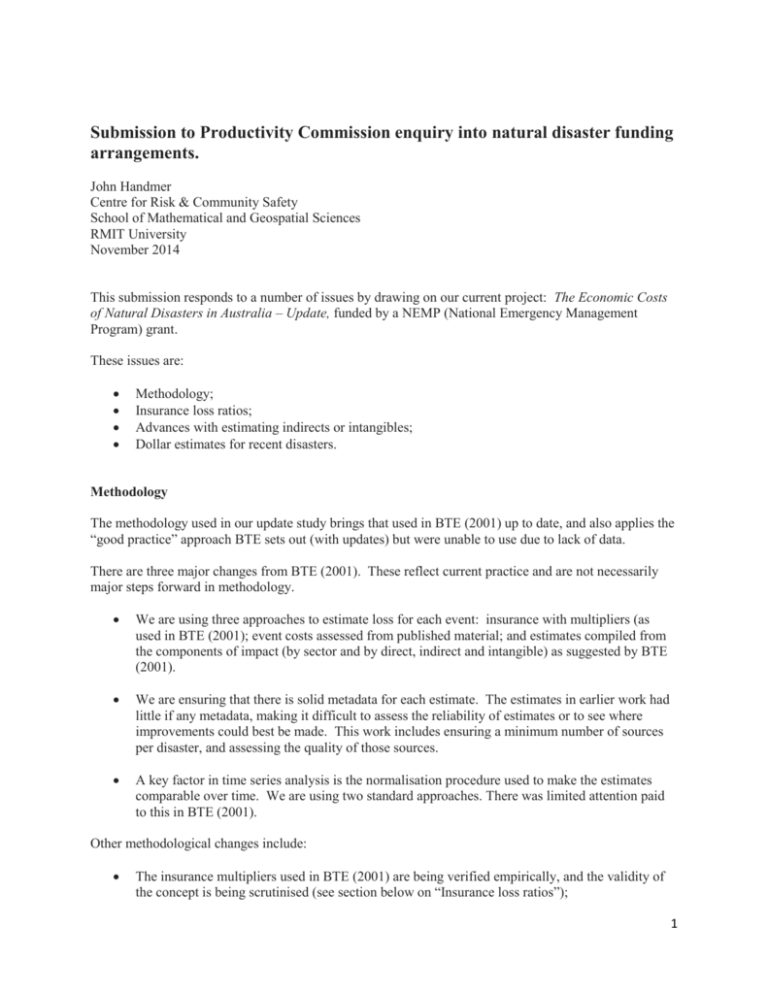
Submission to Productivity Commission enquiry into natural disaster funding arrangements. John Handmer Centre for Risk & Community Safety School of Mathematical and Geospatial Sciences RMIT University November 2014 This submission responds to a number of issues by drawing on our current project: The Economic Costs of Natural Disasters in Australia – Update, funded by a NEMP (National Emergency Management Program) grant. These issues are: Methodology; Insurance loss ratios; Advances with estimating indirects or intangibles; Dollar estimates for recent disasters. Methodology The methodology used in our update study brings that used in BTE (2001) up to date, and also applies the “good practice” approach BTE sets out (with updates) but were unable to use due to lack of data. There are three major changes from BTE (2001). These reflect current practice and are not necessarily major steps forward in methodology. We are using three approaches to estimate loss for each event: insurance with multipliers (as used in BTE (2001); event costs assessed from published material; and estimates compiled from the components of impact (by sector and by direct, indirect and intangible) as suggested by BTE (2001). We are ensuring that there is solid metadata for each estimate. The estimates in earlier work had little if any metadata, making it difficult to assess the reliability of estimates or to see where improvements could best be made. This work includes ensuring a minimum number of sources per disaster, and assessing the quality of those sources. A key factor in time series analysis is the normalisation procedure used to make the estimates comparable over time. We are using two standard approaches. There was limited attention paid to this in BTE (2001). Other methodological changes include: The insurance multipliers used in BTE (2001) are being verified empirically, and the validity of the concept is being scrutinised (see section below on “Insurance loss ratios”); 1 We are using the Value of a Statistical Life (VSL) concept based on work done by the Office of Best Practice Regulation and Kip Viscusi. This differs from the approach taken by BTE (2001). Heat waves are being included. They were not included in earlier work. Inclusion of environmental impacts through the value of damaged and interrupted ecosystem services (see below under “Indirect and intangible losses”) Insurance loss ratios A range of ratios has been used in the draft report. Based on a first pass analysis only, we have suggested an inflationary factor of 4. Insurance payouts are therefore approximately 25% of the total costs of a disaster. Refinement of this figure awaits further analysis of both our data and events. This suggests that the figures from Joy (1991) set out in the BTE 2001 report The Economic Costs of Natural Disaster in Australia, might on average be approximately correct. Note that these ratios from Joy (1991) are based on expert judgment, rather than empirical analysis. Insurance coverage for natural disasters might now be more comprehensive in Australia, suggesting that a higher proportion of the loss would be covered by insurance. However, we now include as monetized losses other items such as ecosystem services for bushfires. Fatalities and injuries are also included (as in BTE 2001) and where there are many fatalities, such as in the Victorian bushfires of February 2009, the proportion covered by insurance will be less. We agree with Joy (1991) and with BTE (2001) that the ratio will vary with type of hazard; and we add that they will also vary with the size and complexity of the event. The ratio will increase with the size of the event. Unfortunately a more calibrated estimate of ratios needs to wait for further analysis of our data. Estimating indirect and intangible losses (see also the section above on “Methodology”) Estimates of indirect and intangible losses remain a major limitation of most disaster estimates (see also Keating and Handmer 2013). We are attempting to improve this situation by including in dollar form some items normally considered intangible. These are environmental losses, and as with the BTE (2001) Report fatalities and injuries are included in dollar form. Nevertheless, as far as intangibles are concerned, memorabilia and cultural heritage are still a gap, and ecosystem services are valued as 'a service to us' rather than for their overall benefit to the Earth system. We are working on other approaches to valuation for intangibles, but these are conceptual only at this stage. Dollar estimates for ecosystem service loss from wildfires follow the method set out in Stephenson (2010) and Stephenson et al. (2012). The global literature discusses improvements in assessing indirect losses in terms of case by case data intensive approaches. The use of multipliers is also discussed, but in a very specific detailed manner, which is also very data and expertise dependent. For indirect impacts, our main focus is on disruption to commerce. Here we are using general sector economic multipliers applied to direct costs (ie agriculture disruption and business disruption). This 2 approach was developed by Handmer et al., and applied in Stephenson (2010) and Stephenson et al. (2012). These multipliers are developed by Australian Government finance departments. Dollar estimates for recent disasters? We are in the process of finalizing our first cut at disaster loss estimates for specific events. This is taking longer than anticipated because we need to cross check results from the three methods we are using to estimate losses. References Handmer, J, S. Fisher, G. Ganewatta, A. Haywood, D. Robson, R. Thornton, and L. Wright (2008), Estimating the cost of fire in Australia: now and in 2020, RMIT University and Bushfire CRC, Melbourne.http://www.bushfirecrc.com/publications/C%C2%AD_Ganewatta.pdf Stephenson, C, Handmer, J, Betts, R (2012). Estimating the economic, social and environmental impacts of wildfires in Australia. Environmental Hazards: 1-19. Stephenson, C. (2010) The impacts, losses and benefits sustained from five severe bushfires in southeastern Australia. Melbourne: DSE Fire Research & Adaptive Management Publications Report # 88. Melbourne. Keating A., and Handmer J (2013) Future potential losses from extremes under climate change: the case of Victoria, Australia. VCCCAR Project: Framing Adaptation in the Victorian Context 3
